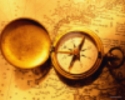Quiz: Chapter 20: Perkins

Communicating with Graphics
Your ability to communicate as a geographer requires that you be not only literate and articulate, but also numerate and...a new one to you perhaps 'graphicate', that is someone who can both 'read' and 'write' in the language of graphics. This chapter is merely an introduction to the science and art of graphical communication. The Geography Department offers courses (Geography 304 and 305) for example, that will help you refine your skills in this area. Should you for some reason not enroll in one of the courses dedicated to cartography, you should make every effort to learn how to communicate graphically. The suggested reading section at the end of this chapter is an excellent one and every geographer should have some sort of reference manual to aid them in the construction of maps and graphics. For you not to have such a reference is akin to an English major not owning a compositional style manual....another item you should consider for purchase.
Instructions:
Fill in the letter or answer that best answers the questions below. Use TAB or your mouse to advance your cursor into response boxes.
Do not press the Enter key until you are ready to submit your answers. If you do, click the Back button in your browser window. When you are satisfied with your answers, press the Enter key or click on the "Submit" button below.
Make sure you enter your name (first name first and last name last) , code and email address in the appropriate data entry boxes below before you submit your answers.
I encourage students to keep a dated copy of their answers in case there is a problem with the submission of your quiz.



